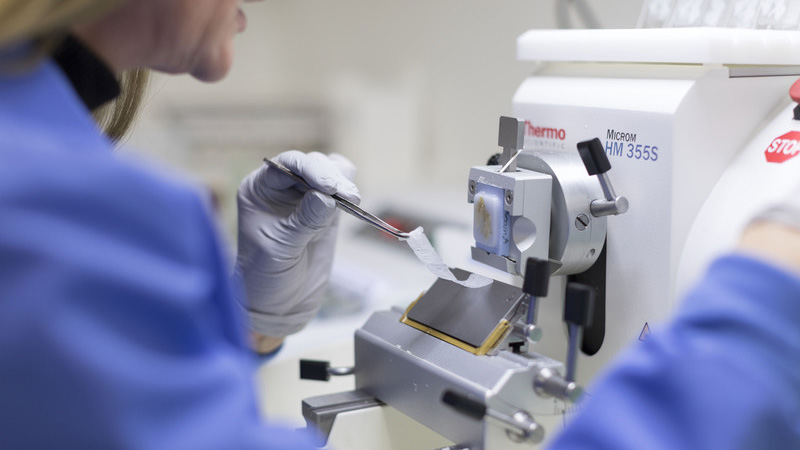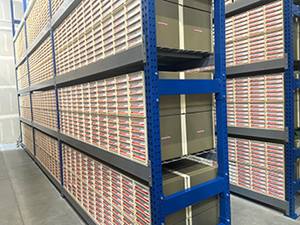
In what may be the largest civilian biorepository in the country, Intermountain caregivers in the Canyons Region have reached a milestone of de-identifying four million archival samples. The de-identifying process allows the samples to be used in research that can save countless lives, while also protecting patient privacy.

Phillip Waite
“This has taken a couple of years,” says Phillip Waite, assistant vice president of biorepository services. “These millions of samples represent millions of individual patients who trust us to keep their information safe and confidential while being good stewards for medical researchers.”
A biorepository is a facility devoted to processing and storing human tissue samples. There are nearly 50 caregivers working at Intermountain’s Biorepository. They’re helping medical oncologists, primary care physicians, gastroenterologists, and other doctor-scientists make discoveries and offer patients proactive care.
“We’re not necessarily doing the research ourselves, but we feel the work that we do enables those discoveries to happen,” Phillip says. The focus of the Biorepository isn’t on curing disease but instead helps doctors, university scientists, commercial partners, and other researchers in prevention and prediction.
In addition to being an honest broker for patients and researchers, the Biorepository team advocated for and helped implement an opt-out process. Now, when patients see their doctor or have a blood draw, they’ll see more precise language about how Intermountain and the Biorepository potentially use discardable clinical samples for research. There’s also new language providing patients with instructions on how to opt out of having such samples used for research if they so choose.
“I think helping better inform people about what we’re doing is essential to our mission,” Phillip says.
Many patients have questions about opting out and what that means for samples that may have already been, or will be, collected.
“If a patient opts out, any samples from them we have on our shelves won’t be used,” Phillip says. “And any samples we get from that patient going forward, we won’t use. So it’s an umbrella opt-out. Patients don’t have to opt-out every time. And they can always decide later to opt back in.”
This effort reflects on Intermountain’s values wanting to go above and beyond giving patients the opportunity to say “no” to have their samples used in research.

“We’re trying to lead out with our commitment to the community because these samples came from the community—just like the original Intermountain hospitals came from the community,” Phillip said.
The de-identification process
The procedure of de-identifying samples includes physically handling each blood or tissue sample, creating a linkage back to the clinical data that may be relevant to researchers, and physically removing those identifiers for a new label that’s applied with a new linking code. Only select Biorepository caregivers know the connection between the sample and the patient.
See how de-identifying samples works in a YouTube video produced for the HerediGene: Population Study.
The samples aren’t just containers of blood for HerediGene. Millions of the formalin-fixed paraffin-embedded (FFPE) tissue samples and pathology slides are collected from surgeries. Pathologists use a microscope to make clinical decisions with the FFPE samples and accompanying slides. Typically, these FFPE samples and slides are under the stewardship of the department of pathology for a decade. Then, they age into the Biorepository where they’re de-identified and kept for research.
The biorepository’s spatial strategy
A lot of health systems have their own biorepository, but they usually destroy samples after being stored for the minimum requirement of 10 years. Phillip says often these health systems are discarding the samples to save space. Since the Intermountain Biorepository’s beginnings in the 1970s at LDS Hospital, making room for research and samples has been a priority at Intermountain. In 2018, it moved to a new building with even more room to grow for the next decade.
“The Biorepository is here because we stand on the shoulders of those who came before us,” Phillip says.
“We go to great lengths to secure the samples and keep them safe,” Phillip adds. “It’s all about keeping patient privacy while improving access for researchers.”

